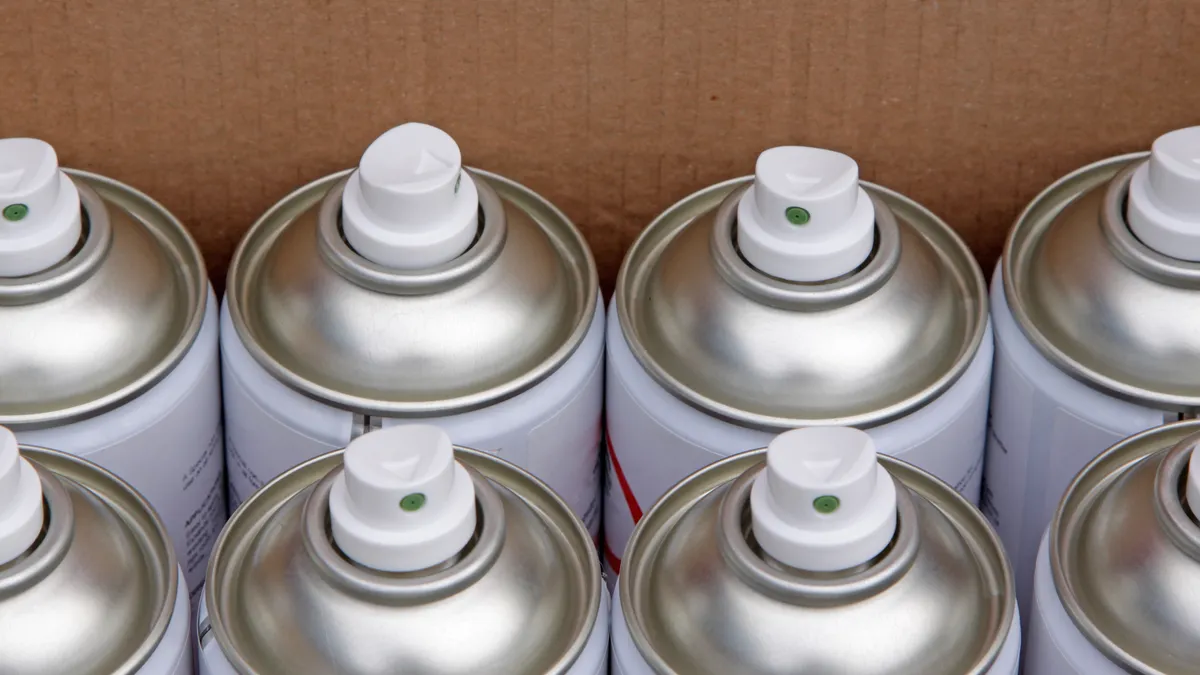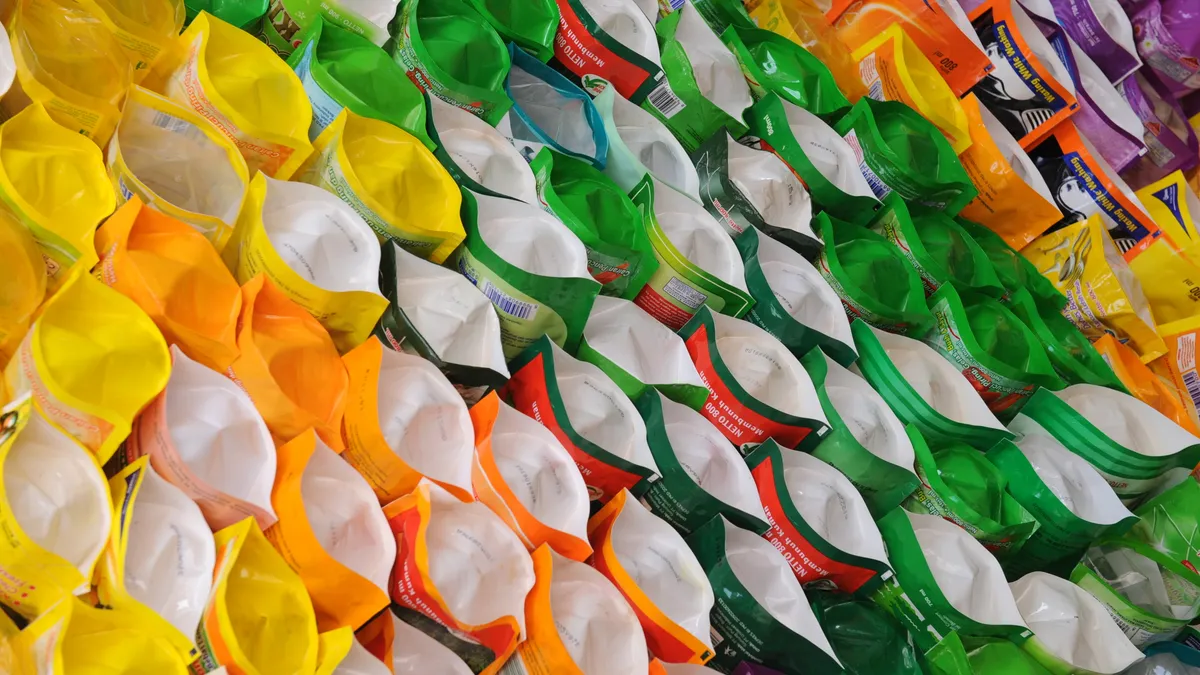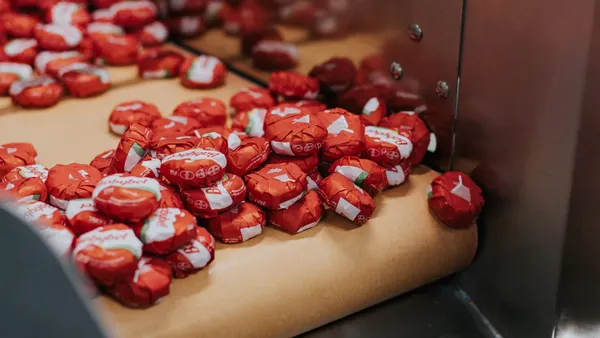Dive Brief:
- The Aerosol Recycling Initiative has assessed the current state of recycling for steel and aluminum aerosol containers and shared next steps for improving recycling access, labeling and research, two years after the initiative launched.
- In a recently released white paper, initiative partners the Can Manufacturers Institute and the Household and Commercial Products Association outlined how they’re working toward 2030 goals. They aim to achieve an 85% recycling access rate for aerosol cans in the U.S. market and have 90% labeled as recyclable with messaging about how to properly recycle them.
- Next steps will include pushing for aerosols to be included on statewide recyclability lists in EPR programs, exploring shredding at aluminum mills and continuing to advocate for MRFs to accept these containers. The initiative’s labeling task force is also developing a guide with recycling messaging options, which could include using How2Recycle, RecycleCheck or other third-party or company-specific options that align with federal and state rules.
Dive Insight:
U.S. aerosol can production — about 4 billion annually — pales in comparison to that of food and beverage cans. But that’s still valuable material to get back.
CMI and HCPA launched the Aerosol Recycling Initiative in 2022 with the support of packaging manufacturers including Ball, Crown Holdings, Sonoco and Trivium, as well CPGs such as Procter & Gamble, SC Johnson and Church & Dwight.
Currently, 61% of people in the U.S. have access to a recycling program that accepts steel aerosol containers, as defined by the Sustainable Packaging Coalition. The figure is 62% for aluminum aerosol containers. Those rates have actually declined; in 2016 the figure was 70% across all aerosol containers, versus just above 60% in 2021.
Advocates say aerosol cans can be a valuable material for MRFs, but some hesitation on the part of MRFs is due to perceived fire risk. Yet “it is actually very rare for these products to be identified as the cause of a MRF fire,” according to the report. Most MRFs already have equipment that could sort aerosols, according to Scott Breen, senior vice president of sustainability at CMI; it’s about getting them “comfortable going from no to yes.”
One of the most important messages to get across to consumers is that aerosol cans must be emptied prior to recycling. Not emptying them can lead to risk of fire or explosion at MRFs. However, even without consistent labeling, most aerosols entering MRFs may already be meeting this bar. Molly Blessing, HCPA’s vice president of sustainability and product stewardship, highlighted that the initiative initiated some pressure testing. Of nearly 900 aerosols from two MRFs, nearly 80% were found to have less than 3% residue.
When it comes to multimaterial cans (a steel or aluminum can with a plastic cap, for instance) there’s mixed degrees of concern about contamination and how much consumers need to be alerted about removing certain materials. For steel cans, for instance, CMI doesn’t emphasize avoiding non-steel elements in design because the steel recycling process is more tolerant of contaminants, according to Breen.
According to the report, further research in this realm could focus on which visuals and words used in recycling messaging resonate most with consumers. It could also conduct an updated MRF fire safety assessment.
For can manufacturers, the actual recycling rate for aerosols doesn’t necessarily impact their company sustainability goals and results, as those are more so pegged to design for recyclability. Still, manufacturers stand to benefit from there being more recycled content available.
Chas Aylsworth, Trivium Packaging’s director of strategy and business development for North America, highlighted the company’s work with the recycling initiative in Trivium’s sustainability report released last week. “This is important work to continue to build on the sustainability benefits of metal aerosol containers,” Aylsworth said.










